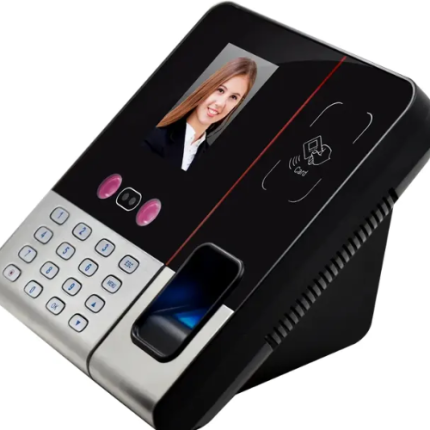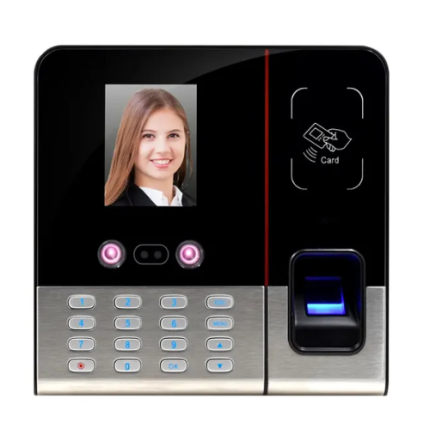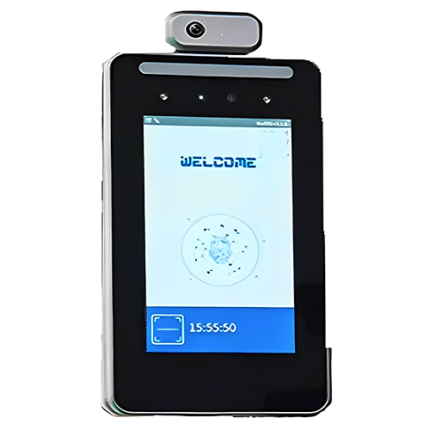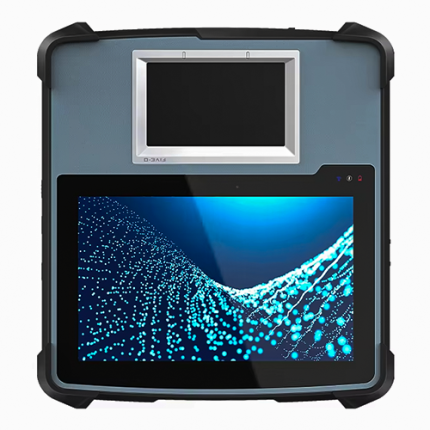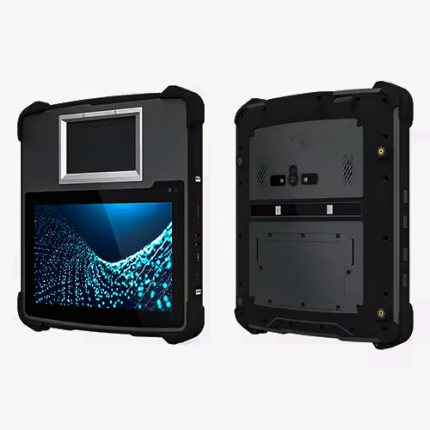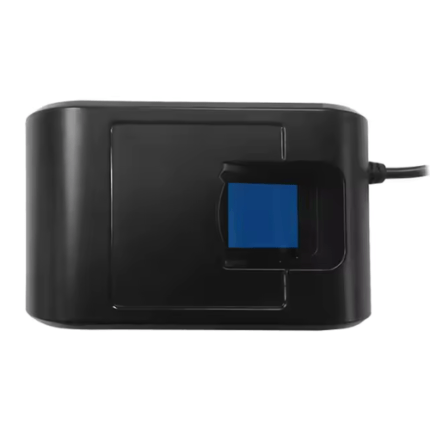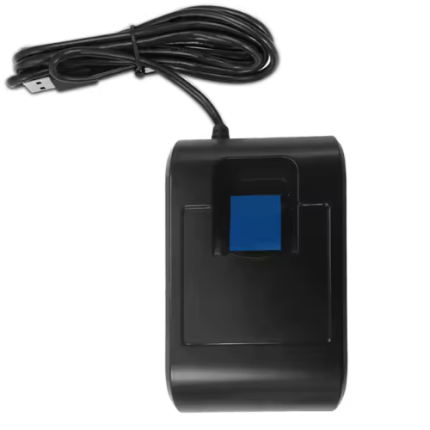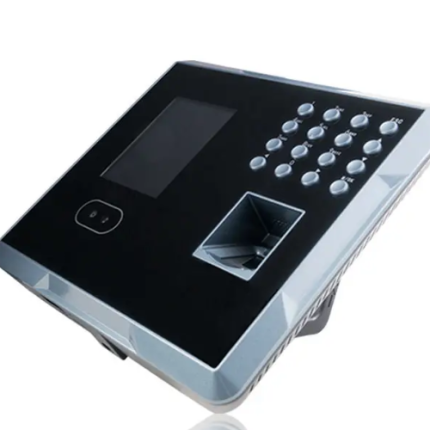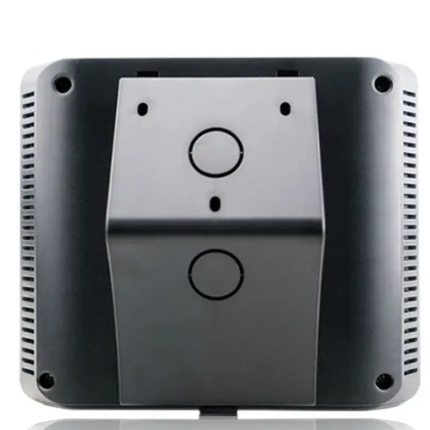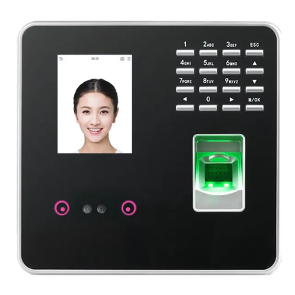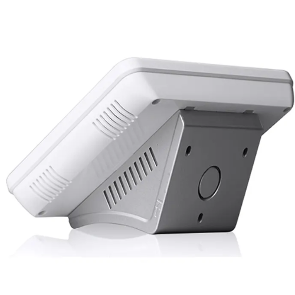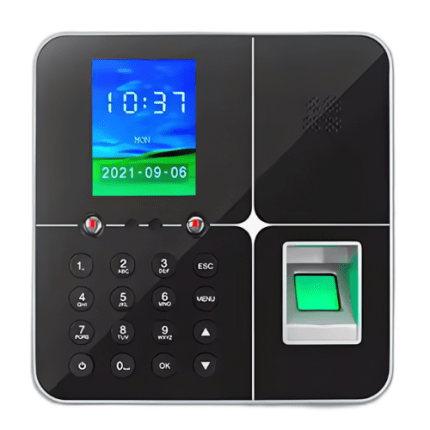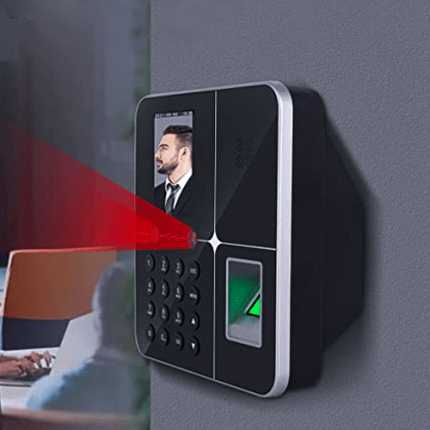Overview
In today’s interconnected world, the integration of Internet of Things (IoT) technology and biometrics is revolutionizing the transportation industry. This synergy enhances security, efficiency, and user experience across various transportation domains, including public transit, aviation, and freight logistics. With IoT facilitating real-time data exchange and biometrics ensuring robust identification, this combination addresses the growing demand for seamless and secure transportation systems.
This guide provides a comprehensive exploration of the intersection between IoT and biometrics in transportation. It begins with an introduction to the underlying technologies and their respective roles, followed by a discussion of specific applications, such as passenger authentication, driver monitoring, and security surveillance. The guide also examines the technical infrastructure required for implementation, including IoT platforms, cloud computing, and network considerations.
Recognizing the importance of addressing privacy and ethical concerns, the guide includes strategies for safeguarding sensitive biometric data and ensuring compliance with regulatory standards. Real-world case studies illustrate successful implementations, offering valuable insights and best practices for stakeholders.
Finally, the guide concludes with an outlook on future trends and innovations, highlighting opportunities for advancing IoT and biometric integration in autonomous vehicles, urban mobility, and beyond. Designed for professionals, policymakers, and technology enthusiasts, this resource serves as a roadmap for navigating the rapidly evolving landscape of transportation IoT and biometrics.
Below are products and systems related to this webpage:
Our products are in stock and can be shipped overnight to Continental U.S. and Canada from one of our local warehouses. If you have any questions, our technical experts can help you. Please fill out this form or email us.
We are actively looking for partners who are like us located in the U.S. and Canada. For more information on partnering with GAO, please visit Partner with GAO Tek Inc. It lists various ways to partner with GAO, such as OEM Partnerships, Technology Integration, Distribution and Reselling Opportunities, Presenting at the Leading Event Tek Summit, Joint R&D Projects, Training and Consulting Services, Industry-Specific Collaborations, Research and Academic Partnerships.
1. Definition and Importance of IoT and Biometrics in Transportation
The Internet of Things (IoT) and biometrics are pivotal to transforming the transportation industry, creating smarter, more efficient, and secure systems. IoT refers to the interconnected network of physical devices embedded with sensors, software, and other technologies to collect and exchange data, while biometrics involves the use of unique physiological characteristics such as fingerprints, facial recognition, and retinal scans for identification and authentication.
In transportation, IoT enables real-time monitoring, route optimization, and predictive maintenance, all of which significantly improve operational efficiency. Biometrics, on the other hand, enhances security, personalizes user experiences, and streamlines passenger identification and access control processes. Together, these technologies create seamless, safe, and efficient transportation networks that benefit both operators and passengers.
Key Trends Driving Adoption
Several trends are accelerating the integration of IoT and biometrics in transportation systems:
- Increased Demand for Smart Mobility Solutions: As cities expand and populations grow, the need for smart transportation solutions, such as autonomous vehicles, ride-sharing, and smart traffic management, is on the rise. IoT helps optimize traffic flow, while biometrics enhances the safety and efficiency of these systems.
- Focus on Enhanced Security: With rising concerns over terrorism and personal safety, biometrics provides a robust security framework for transportation systems. Facial recognition at airports, biometric ticketing for trains, and identity verification for rideshare services are becoming more widespread.
- Government and Regulatory Support: Governments are increasingly investing in smart infrastructure and biometric technology to create more secure and efficient transportation networks. Public transportation agencies are adopting biometrics for automated ticketing and access control.
- Integration with Emerging Technologies: The combination of IoT, biometrics, artificial intelligence (AI), and machine learning (ML) is propelling transportation toward a more automated, connected future. These technologies work together to improve user experiences and reduce operational costs.
Summary of the Guide’s Structure
This comprehensive guide covers the essential components of IoT and biometrics in transportation, beginning with an overview of their roles and importance. In the subsequent sections, we dive deeper into how IoT is reshaping transportation, explore the wide-ranging applications of biometrics, and discuss the technological infrastructure required for successful implementation.
We also address critical considerations around privacy, security, and ethics, providing real-world case studies and success stories of IoT and biometrics in action. The guide concludes with an exploration of future trends and opportunities, highlighting how these technologies will continue to evolve and shape the future of transportation.
GAO Tek Inc., with its extensive R&D investment and leadership in advanced IoT and biometric solutions, is at the forefront of this transformation. Our solutions help transportation systems worldwide enhance security, efficiency, and user experience, ensuring seamless integration and long-term sustainability.
2. The Role of IoT in Transportation
Understanding IoT and Its Applications in Transportation
The Internet of Things (IoT) is the network of interconnected physical devices that collect, share, and analyze data. In the transportation industry, IoT integrates sensors, devices, and software to enhance the functionality of transportation systems, making them smarter, more efficient, and responsive to real-time conditions. Through IoT, transportation infrastructure and vehicles can communicate with one another and with central control systems to optimize routes, monitor traffic, ensure safety, and improve the overall user experience.
IoT applications in transportation span several areas:
- Smart Traffic Management: IoT-enabled traffic signals and cameras collect data from vehicles and infrastructure, enabling real-time traffic flow management. This technology helps reduce congestion, optimize routes, and provide better traffic predictions.
- Fleet Management: Vehicles embedded with IoT sensors can transmit data on location, speed, and condition to fleet managers. This data aids in route optimization, predictive maintenance, and ensures vehicles are running efficiently.
- Connected Vehicles: IoT is crucial in the development of autonomous vehicles, enabling communication between cars, infrastructure, and other vehicles (V2X communication) for improved safety and navigation.
- Public Transport Systems: IoT enhances the user experience in public transport by enabling real-time updates, mobile ticketing, predictive arrival times, and vehicle tracking. Passengers can use mobile apps to access information on delays, routes, and schedules.
- Asset Monitoring: IoT-enabled sensors monitor the health of transportation infrastructure, such as bridges, tunnels, and railways. These sensors detect structural changes, which can trigger maintenance before a failure occurs, improving safety and reducing downtime.
Benefits of IoT-Enabled Transportation Systems
The integration of IoT into transportation systems brings several key benefits:
- Enhanced Efficiency and Performance: IoT systems automate routine tasks and provide real-time data for more effective decision-making, such as route adjustments, congestion avoidance, and optimal scheduling.
- Cost Savings: By enabling predictive maintenance and better asset management, IoT helps reduce repair costs, improve fuel efficiency, and extend the life of transportation infrastructure and vehicles.
- Improved Safety: IoT-powered vehicles and infrastructure enable continuous monitoring of conditions, such as road quality, weather, and traffic, which leads to fewer accidents and better emergency responses.
- Better Customer Experience: Real-time updates, mobile apps, and IoT-enabled ticketing systems enhance the convenience of transportation services, allowing passengers to make more informed decisions, track vehicles, and reduce waiting times.
- Sustainability: By improving fuel efficiency, reducing congestion, and optimizing routes, IoT can help decrease emissions and contribute to more sustainable transportation practices.
Current Challenges and Solutions
Despite the many benefits, the adoption of IoT in transportation faces several challenges:
- Data Security and Privacy: The massive amount of data generated by IoT devices can be vulnerable to cyber-attacks. To address this, robust encryption protocols, secure data storage solutions, and regular software updates are essential.
- Interoperability: Many IoT devices and transportation systems are developed by different manufacturers, which can lead to compatibility issues. Standardization of protocols and interfaces is critical to ensuring seamless integration across platforms.
- Infrastructure Costs: The initial investment in IoT-enabled infrastructure can be significant, particularly for legacy transportation systems. GAO Tek Inc. offers affordable, scalable solutions for upgrading existing systems, allowing businesses to take advantage of IoT benefits without overextending their budgets.
- Data Management: The sheer volume of data generated can overwhelm existing systems. Advanced analytics, edge computing, and cloud-based solutions can be leveraged to process and analyze data efficiently, turning it into actionable insights.
- Regulatory Compliance: Transportation IoT solutions must comply with local and international regulations regarding data privacy, safety, and interoperability. GAO Tek works closely with clients to ensure that our IoT solutions meet the necessary compliance standards.
GAO Tek Inc., with decades of experience in IoT technology, can support the implementation of intelligent transportation solutions by providing high-quality, scalable devices and systems that help mitigate these challenges. Our commitment to R&D, quality assurance, and expert support makes us a trusted partner in transforming transportation with IoT technology. Through our extensive portfolio, we can help design and deploy IoT solutions that enhance safety, efficiency, and the user experience, while reducing costs and addressing regulatory challenges.
3. Introduction to Biometrics in Transportation
Overview of Biometric Technologies (e.g., Facial Recognition, Fingerprint Scanning)
Biometrics involves the use of unique physical or behavioral characteristics to identify and authenticate individuals. In transportation, several biometric technologies are being increasingly integrated to enhance security and streamline processes:
- Facial Recognition: One of the most widely adopted biometric technologies, facial recognition uses sophisticated algorithms to identify and verify individuals based on their facial features. This technology is highly effective in environments where quick, contactless identification is needed, such as at airports, train stations, and bus terminals.
- Fingerprint Scanning: Fingerprint biometrics involve scanning the unique ridge patterns on a person’s finger to confirm their identity. It’s a widely used method in applications like employee access control, vehicle fleet management, and toll payment systems.
- Iris Scanning: Iris scanning is another highly accurate biometric method that uses patterns in the colored ring around the pupil for identification. While less common than facial recognition and fingerprint scanning, it’s used in high-security environments where precision is critical.
- Voice Recognition: While still emerging in transportation, voice biometrics offer a promising option for verifying identity through voice patterns. It’s particularly useful in customer service applications, such as voice-activated ticketing or ride-hailing services.
These technologies can be deployed independently or in combination, depending on the specific needs of the transportation system.
Importance of Biometrics for Security and Efficiency
The implementation of biometrics in transportation offers critical advantages in both security and operational efficiency:
- Enhanced Security: Biometrics helps to reduce the risk of identity theft, fraud, and unauthorized access. In high-stakes environments such as airports or secure government transportation networks, facial recognition and fingerprint scanning ensure that only authorized individuals gain access to restricted areas or secure transportation systems.
- Streamlined Processes: By eliminating the need for physical tickets or passwords, biometric authentication speeds up boarding processes, reduces human error, and improves the overall flow of passengers. For example, in airports, passengers can use facial recognition to check in, clear security, and board flights without the need for tickets or ID cards.
- Personalization: Biometrics can be used to customize transportation experiences for individuals. For instance, personalized seating, climate control, and entertainment options can be automatically adjusted based on the identified passenger’s preferences.
- Operational Efficiency: By automating identity verification and reducing manual checks, biometric systems help to optimize operations and reduce bottlenecks. This results in faster processing times, reduced wait times, and improved service delivery for passengers.
Integration with IoT for Enhanced Functionality
The combination of IoT and biometrics amplifies the effectiveness of both technologies in transportation systems:
- Real-Time Data Sharing: IoT-enabled devices in transportation infrastructure (e.g., cameras, sensors, and smart devices) can collect biometric data and transmit it in real-time to central systems for immediate processing. This integration enhances the speed and accuracy of biometric verification.
- Seamless User Experience: When biometrics are integrated with IoT, passengers can enjoy a smoother, more efficient travel experience. For example, smart transportation systems can automatically adjust traffic lights, open gates, or unlock access points when the identity of an individual is verified through biometrics.
- Predictive Analytics: Combining IoT data with biometric authentication provides valuable insights into user behaviors and travel patterns. These insights can be used for predictive maintenance, to optimize routes, and to ensure that transportation systems operate at peak efficiency.
- Smart Transportation Ecosystems: In a fully integrated IoT-Biometrics system, vehicles, infrastructure, and passengers can all interact intelligently. For instance, a car’s biometric system can authenticate the driver and adjust the vehicle’s settings according to their preferences, while IoT sensors monitor the vehicle’s health and performance.
Current Challenges and Solutions
While the adoption of biometric technologies in transportation presents significant advantages, several challenges need to be addressed:
- Privacy Concerns: The collection and storage of biometric data raise concerns about user privacy. To mitigate this, it is essential to implement stringent data protection measures, including encryption, anonymization, and secure storage. GAO Tek can assist organizations in selecting biometric systems that comply with relevant privacy laws and regulations, ensuring a balance between security and privacy.
- Accuracy and Reliability: Biometric systems must be highly accurate to avoid false positives and negatives. Environmental factors, such as lighting in facial recognition or skin conditions affecting fingerprint scans, can affect performance. GAO Tek’s advanced biometric systems are designed with high precision and adaptability, providing reliable solutions for transportation systems, even in challenging conditions.
- Integration Challenges: Integrating biometric technologies with existing transportation infrastructure and IoT systems can be complex. GAO Tek offers robust, scalable biometric solutions that are easily integrated with legacy systems, ensuring minimal disruption during the transition to more secure and efficient systems.
- Cost of Implementation: While the benefits of biometric systems are clear, the initial investment required for implementation can be significant. GAO Tek can help by offering cost-effective, scalable biometric solutions tailored to the unique needs of the transportation industry, ensuring clients achieve the maximum return on investment.
By overcoming these challenges, biometric solutions can significantly enhance security, streamline operations, and provide a superior travel experience for users. GAO Tek’s expertise and advanced biometric systems can help transportation companies navigate these obstacles while implementing cutting-edge solutions.
4. Applications of Biometrics in IoT-Enabled Transportation
Biometric technologies, when integrated with Internet of Things (IoT) systems, offer significant advantages in enhancing the efficiency, security, and user experience in transportation. Here, we explore the key applications of biometrics in IoT-enabled transportation systems:
Passenger Authentication and Ticketing Systems
Biometrics is transforming the traditional process of ticketing and passenger authentication in the transportation industry. Facial recognition, fingerprint scanning, and iris scanning allow passengers to authenticate themselves seamlessly, eliminating the need for physical tickets or ID cards.
- Facial Recognition for Seamless Boarding: At airports, train stations, or bus terminals, passengers can simply walk through designated biometric gates where facial recognition systems automatically verify their identity. This technology significantly reduces wait times and the need for manual intervention, providing passengers with a faster, more efficient travel experience.
- Fingerprint and Iris Scanning for Secure Access: For secure environments, such as high-speed trains or exclusive transportation networks, fingerprint and iris scanning provide an additional layer of security. These methods ensure that only authorized passengers are granted access, reducing the risk of fraud or unauthorized entry.
By integrating these biometric systems with IoT devices, transportation operators can streamline the entire process, from ticket purchase to entry and exit, making it easier for passengers and more efficient for service providers.
Driver Monitoring and Management Systems
In the transportation industry, monitoring the behavior and performance of drivers is crucial for safety and operational efficiency. Biometric technologies, especially facial recognition and voice analysis, play a vital role in ensuring driver compliance, safety, and health.
- Fatigue Detection: Biometric systems can detect signs of fatigue or drowsiness by analyzing facial features or eye movement. This real-time data, transmitted via IoT-enabled devices, helps prevent accidents caused by driver fatigue.
- Health Monitoring: In addition to fatigue detection, biometric systems can monitor drivers’ vital signs, such as heart rate and stress levels. When integrated with IoT devices, the system can send alerts if a driver’s health status requires attention, ensuring both driver and passenger safety.
GAO Tek’s advanced biometric systems can help integrate these solutions seamlessly into transportation networks, providing real-time data for monitoring and improving driver performance.
Smart Vehicle Access and Control
Biometric solutions are transforming vehicle access and control, enhancing both security and convenience for vehicle owners and operators. By using biometric authentication, such as fingerprint or facial recognition, access to vehicles is restricted to authorized individuals, providing a higher level of security.
- Keyless Entry and Start: Biometric identification systems allow drivers to unlock and start their vehicles without needing traditional keys. This provides a more secure and convenient solution, especially for fleet management where access needs to be tightly controlled.
- Personalized Vehicle Settings: IoT-enabled biometric systems can be used to customize the vehicle experience based on the identified user. For example, upon recognition of the driver, the vehicle can adjust seat positions, climate controls, and entertainment settings to the user’s preferences.
GAO Tek’s biometric solutions can integrate with IoT technologies to ensure secure, efficient, and user-friendly vehicle access systems tailored to specific transportation needs.
Real-Time Surveillance and Security
Biometric systems combined with IoT-enabled surveillance offer enhanced security for both passengers and infrastructure. The integration of real-time monitoring with biometric identification provides a proactive approach to security management.
- Passenger Screening and Crowd Management: In high-traffic areas, such as airports and train stations, biometric systems can be used in conjunction with IoT-enabled cameras and sensors to perform real-time passenger screening. These systems can detect suspicious behaviors and unauthorized individuals, triggering automatic alerts to security personnel.
- Video Surveillance with Facial Recognition: Security cameras equipped with facial recognition capabilities can identify individuals in real-time as they enter and move through transportation hubs. This application is particularly useful for monitoring restricted areas or detecting persons of interest based on pre-existing security databases.
By leveraging IoT sensors and biometric recognition, transportation providers can enhance security, monitor behavior, and respond to incidents more efficiently. GAO Tek’s biometric solutions are designed to integrate with existing IoT surveillance systems, offering a comprehensive approach to real-time security.
Current Challenges and Solutions
While the applications of biometrics in IoT-enabled transportation offer numerous advantages, there are also challenges that need to be addressed:
- Data Privacy and Security: Biometric data is sensitive, and its collection and storage must comply with strict privacy regulations. GAO Tek provides biometric systems with strong encryption and secure data storage to ensure compliance with local and international privacy laws, such as GDPR.
- Accuracy and Reliability: Biometric systems can sometimes be affected by environmental factors such as lighting or physical obstructions. GAO Tek’s solutions are designed with advanced algorithms that adapt to varying conditions, ensuring high accuracy and reliability even in challenging environments.
- Integration with Legacy Systems: Many transportation systems already have established infrastructure, which can make the integration of new biometric technologies difficult. GAO Tek specializes in creating scalable, interoperable biometric solutions that can seamlessly integrate with existing systems, minimizing downtime during implementation.
- Cost of Deployment: The initial investment in biometric systems can be high, particularly for large transportation networks. GAO Tek helps clients achieve maximum return on investment by providing cost-effective biometric solutions that are scalable and offer long-term benefits in terms of operational efficiency and security.
By addressing these challenges, GAO Tek’s biometric systems can significantly enhance the functionality and security of IoT-enabled transportation systems, providing a seamless, secure, and efficient travel experience.
5. Technological Infrastructure
The successful integration of biometrics with IoT in transportation requires robust and scalable technological infrastructure. This infrastructure ensures seamless operation, real-time data processing, and high security. In this section, we explore the key components of the technological infrastructure that enable IoT-enabled biometric systems in transportation.
IoT Platforms and Protocols for Biometric Integration
IoT platforms serve as the backbone for integrating biometric systems into transportation networks. These platforms provide the framework for data collection, transmission, and processing, ensuring that biometric data is effectively incorporated into the broader IoT ecosystem.
- IoT Platforms: Platforms such as Microsoft Azure IoT, AWS IoT, and Google Cloud IoT offer the infrastructure to connect, monitor, and manage IoT devices. These platforms can easily integrate biometric authentication systems like facial recognition or fingerprint scanning, allowing seamless data exchange between devices and cloud services.
- Protocols: IoT protocols like MQTT (Message Queuing Telemetry Transport), CoAP (Constrained Application Protocol), and HTTP/HTTPS are commonly used to facilitate communication between biometric devices (e.g., cameras, sensors) and IoT platforms. MQTT, in particular, is well-suited for real-time applications as it allows efficient and lightweight messaging.
- Biometric API Integration: Through API integrations, biometric systems can be linked to IoT platforms to ensure smooth interoperability. APIs allow the seamless exchange of biometric data across devices, ensuring that authentication and security are incorporated in real time.
GAO Tek provides IoT-enabled biometric solutions that are compatible with a wide range of IoT platforms and protocols, ensuring that our clients’ transportation networks can scale efficiently.
Cloud Computing, Edge Computing, and Data Analytics
Cloud and edge computing technologies are central to processing and analyzing the massive volumes of data generated by biometric IoT systems in transportation.
- Cloud Computing: Cloud computing platforms provide centralized data storage and processing capabilities, allowing biometric data from transportation systems to be stored, analyzed, and accessed remotely. This centralization enables real-time monitoring, reporting, and decision-making. Cloud platforms also support scalable storage solutions, ensuring that vast amounts of biometric data are safely archived.
- Edge Computing: For time-sensitive applications, such as biometric authentication at security checkpoints, edge computing offers a solution. With edge computing, data processing is moved closer to the point of collection—on the device or local server—reducing latency and ensuring faster decision-making. For example, a facial recognition system on a camera can process data locally before sending relevant information to the cloud.
- Data Analytics: IoT-enabled biometric systems generate a wealth of data that can be leveraged for predictive analytics, trend analysis, and operational optimization. By using AI and machine learning algorithms, transportation providers can gain valuable insights into passenger behavior, security patterns, and system performance. For instance, biometric data from driver monitoring systems can be analyzed to identify risky driving behaviors and improve safety measures.
GAO Tek’s IoT and biometric solutions are designed to seamlessly integrate with both cloud and edge computing environments, enabling transportation networks to harness the full potential of data analytics for enhanced efficiency and security.
Network Requirements for Seamless Operation
The network infrastructure is a critical component for ensuring the seamless operation of IoT-enabled biometric systems in transportation. These systems rely on fast, reliable, and secure communication networks to transmit biometric data in real time.
- High-Speed Connectivity: A robust, high-speed internet connection is essential for transmitting large amounts of biometric data, especially video feeds from facial recognition systems or fingerprint scans. Fiber-optic networks, 5G, and Wi-Fi 6 are ideal solutions for ensuring that data is transferred quickly and without interruption.
- Low Latency: Low-latency networks are crucial for applications where real-time data processing is essential, such as driver monitoring and passenger authentication. 5G technology, with its low latency and high bandwidth capabilities, is particularly well-suited for these types of applications. It enables rapid transmission of biometric data, allowing for fast response times in critical situations.
- Secure Networks: The security of biometric data is paramount, which means that the networks connecting IoT devices and biometric systems must be secure. Implementing encrypted communication protocols such as SSL/TLS ensures that data is protected during transit. Virtual private networks (VPNs) and secure access gateways can also be deployed to provide additional layers of security.
GAO Tek’s biometric solutions are built with high security and seamless network integration in mind. Our products support the latest network technologies, such as 5G and Wi-Fi 6, ensuring that biometric data is transmitted securely and with minimal delay.
Current Challenges and Solutions
While the technological infrastructure for IoT-enabled biometric systems is rapidly advancing, there are still several challenges to consider:
- Interoperability: As transportation networks often consist of diverse systems and technologies, ensuring that biometric systems integrate smoothly with existing infrastructure can be challenging. GAO Tek specializes in providing highly compatible solutions that can be integrated with a wide range of IoT platforms, ensuring smooth interoperability across various transportation systems.
- Data Overload: With the integration of biometric systems, transportation networks can generate massive amounts of data. Without proper infrastructure to handle this data, it may lead to storage and processing challenges. GAO Tek’s solutions leverage cloud and edge computing to ensure that data is processed and stored efficiently, while analytics tools help filter and interpret the most important data points in real time.
- Latency in Real-Time Processing: Some biometric applications, like facial recognition at security checkpoints, require low-latency processing. To address this, GAO Tek’s edge computing solutions allow data to be processed locally on the device, reducing latency and enabling quicker decision-making.
- Network Security: The transmission of sensitive biometric data poses potential security risks. GAO Tek employs robust encryption techniques and secure communication protocols to protect data during transfer, minimizing the risk of data breaches.
By addressing these challenges, GAO Tek’s cutting-edge IoT and biometric technologies offer transportation providers reliable, secure, and scalable infrastructure to drive the future of transportation systems.
6. Privacy, Security, and Ethical Considerations
As the adoption of IoT and biometric technologies expands in transportation, addressing privacy, security, and ethical concerns becomes crucial. These technologies, while offering enhanced convenience and security, also raise important questions about data protection, system integrity, and the potential for misuse. In this section, we delve into these concerns and discuss strategies for securing IoT-biometric systems while respecting privacy and upholding ethical standards.
Addressing Concerns Around Biometric Data Privacy
Biometric data, including fingerprints, facial features, and iris scans, is highly sensitive and unique to each individual. The collection, storage, and processing of such data must be carefully managed to protect individuals’ privacy.
- Data Sensitivity: Biometric data is inherently personal and, if compromised, can result in significant privacy violations. Unlike passwords or PINs, biometric traits are permanent and cannot be changed if exposed. As a result, transportation companies deploying biometric systems must prioritize strong data protection mechanisms to safeguard this sensitive information.
- Regulatory Compliance: Several laws and regulations, such as the General Data Protection Regulation (GDPR) in the European Union and the Biometric Information Privacy Act (BIPA) in the U.S., govern the collection and processing of biometric data. These regulations require organizations to obtain explicit consent from individuals before collecting biometric data, implement stringent data retention policies, and ensure the security of the data throughout its lifecycle.
At GAO Tek, we are committed to ensuring that our IoT and biometric solutions comply with all relevant data privacy regulations. We implement advanced encryption techniques and data anonymization processes to protect our clients’ systems and ensure that biometric data is stored and processed in a secure and compliant manner.
Strategies for Securing IoT-Biometric Systems
The integration of biometric systems into IoT networks introduces potential vulnerabilities that must be addressed to maintain system integrity and protect sensitive data.
- Encryption: End-to-end encryption is essential for ensuring that biometric data is securely transmitted between devices, edge nodes, and cloud platforms. This prevents data from being intercepted during transfer and ensures that even if data is compromised, it remains unreadable without the decryption key.
- Authentication and Access Control: Robust authentication mechanisms, such as multi-factor authentication (MFA), should be employed to secure access to biometric data and IoT systems. These measures ensure that only authorized personnel can access sensitive data or control critical transportation systems.
- Device and Network Security: Securing IoT devices and the networks they operate on is vital to preventing unauthorized access or tampering. IoT devices, including cameras, sensors, and servers, should be equipped with secure firmware and software updates to mitigate vulnerabilities. Additionally, the networks that connect these devices should be fortified with secure protocols (e.g., SSL/TLS) and access controls.
- Regular Audits and Monitoring: Continuous monitoring and periodic security audits are essential to identify and address vulnerabilities in biometric IoT systems. Real-time monitoring of data flows and system access can detect anomalous activity, such as unauthorized access attempts or data breaches, enabling quick responses to mitigate risks.
GAO Tek takes a comprehensive approach to securing our IoT and biometric systems, offering encrypted communications, secure authentication protocols, and continuous support to ensure that transportation networks are protected from evolving cyber threats.
Ethical Implications of Deploying Biometric Technologies
While the benefits of biometric technologies are clear, their widespread use also raises significant ethical considerations that must be carefully managed.
- Informed Consent: One of the foundational ethical principles for deploying biometric systems is obtaining informed consent from individuals. Passengers and employees should be fully aware of what biometric data is being collected, how it will be used, and the potential risks involved. This transparency helps to build trust and ensures that individuals are not coerced into providing biometric data against their will.
- Non-Discrimination: Biometric technologies must be designed and deployed in a manner that is fair and non-discriminatory. For example, facial recognition systems must be accurate across different demographic groups to avoid biased outcomes. Racial, gender, and age biases in biometric systems can lead to unfair treatment, which could undermine public confidence in the technology.
- Data Retention and Use: Ethical concerns also arise regarding the storage and usage of biometric data. Once data is collected, there must be clear guidelines on how long it can be retained and what it will be used for. Additionally, biometric data should never be used for purposes beyond what was originally agreed upon by the user. For instance, using biometric data for surveillance beyond the intended scope, such as monitoring individuals’ movements or behaviors without consent, can raise serious ethical issues.
- Transparency in Data Use: Transportation authorities and service providers must ensure that users are fully informed about how their biometric data is being used. This includes providing accessible information about the purposes of data collection, the sharing of data with third parties, and users’ rights to access or delete their data.
At GAO Tek, we prioritize ethical considerations in the design and deployment of our IoT-enabled biometric systems. We work closely with our clients to ensure that their solutions respect privacy, provide transparency, and adhere to the highest ethical standards. Our solutions are designed to offer the best possible user experience while safeguarding individual rights.
Current Challenges and Solutions
Despite the advancements in biometric IoT systems, several challenges remain in terms of privacy, security, and ethics:
- Data Breaches and Misuse: The collection and storage of biometric data create significant risks if not adequately protected. GAO Tek’s solutions use state-of-the-art encryption and secure data handling practices to mitigate these risks and ensure compliance with international privacy laws.
- Lack of Standardization: The absence of universally accepted standards for biometric data handling and IoT integration can lead to inconsistency in security practices and data protection. GAO Tek adheres to industry best practices and standards to ensure interoperability and data security across our systems.
- Public Perception and Trust: Public concerns about the potential for surveillance and misuse of biometric data can hinder the adoption of these technologies. Transparent communication and clear consent protocols, which GAO Tek supports, can help foster trust and increase user confidence in the use of biometric systems.
- Bias and Accuracy: Biometric systems must be designed to avoid bias and ensure accuracy for all users. At GAO Tek, we are committed to creating inclusive and accurate systems that provide equal treatment for all users, regardless of their demographic characteristics.
By proactively addressing these challenges, GAO Tek helps ensure that our clients can deploy secure, ethical, and privacy-respecting IoT-enabled biometric systems in transportation.
7. Case Studies and Success Stories
At GAO Tek, we have been actively involved in the deployment of IoT and biometric solutions for transportation, contributing to significant improvements in public transit, aviation, and logistics. In this section, we highlight 17 case studies from the U.S. and Canada, showcasing the successful implementation of biometric IoT systems. These cases illustrate the real-world benefits, challenges, and solutions that organizations have experienced in these sectors.
GAO Case Studies
USA Case Study
- New York City, NY – Public Transit System
A major transit authority in New York City implemented a biometric-based ticketing and access control system, improving passenger flow and reducing fraud. The integration of fingerprint scanning and facial recognition helped enhance security while ensuring a seamless travel experience for commuters.
- Los Angeles, CA – Airport Security
An international airport in Los Angeles adopted biometric facial recognition technology to streamline check-in and security processes. The system reduced passenger wait times and increased the overall efficiency of the airport’s operations, leading to higher passenger satisfaction.
- Chicago, IL – Freight Logistics
A logistics company in Chicago integrated IoT sensors and biometric authentication into its cargo handling system. This allowed real-time tracking of shipments, while biometric access ensured that only authorized personnel could access sensitive cargo, improving security and operational efficiency.
- Miami, FL – Smart Parking System
In Miami, a smart parking system leveraging biometrics was introduced for secure access to parking facilities. Drivers used facial recognition to enter and exit parking garages, enhancing convenience and reducing unauthorized access.
- Dallas, TX – Public Transit Safety
A Texas-based transit authority integrated biometrics into its vehicle monitoring system, allowing for real-time driver authentication and monitoring. The system helped identify signs of fatigue or distraction, ensuring passenger safety and improving driver performance.
- San Francisco, CA – Airport Check-In
San Francisco International Airport deployed a biometric check-in system using fingerprint scanning for passengers, reducing check-in times and enhancing overall airport security. The solution offered a contactless experience, improving passenger convenience while enhancing safety protocols.
- Washington, DC – Ride-Hailing Service
A ride-hailing company in Washington, DC, implemented facial recognition as a part of its driver authentication process. This biometric verification system ensured that passengers were matched with the correct driver, reducing fraud and increasing trust in the service.
- Seattle, WA – Delivery Management System
In Seattle, a large delivery service adopted IoT-enabled biometric access to improve the management of packages in distribution centers. Biometric authentication was used to verify the identity of warehouse workers, enhancing security and reducing the risk of theft.
- Denver, CO – Airport Access Control
A Denver-based airport integrated facial recognition technology for access control in restricted areas. This biometric solution improved security and allowed for more efficient management of airport personnel and contractors without compromising safety standards.
- Atlanta, GA – Automated Ticketing in Subways
The transit system in Atlanta incorporated facial recognition in its subway stations for automated ticketing. This reduced queues, improved security, and allowed passengers to board trains more efficiently.
- Houston, TX – Airport Immigration Process
At an international airport in Houston, biometric facial recognition was used to expedite the immigration process. The technology reduced passenger wait times and provided additional layers of security, offering a more seamless travel experience.
- Phoenix, AZ – Bus Access Control
A public transportation network in Phoenix implemented fingerprint-based access control for buses. This system improved payment verification and helped the city reduce fare evasion, while ensuring secure and efficient operations.
- Boston, MA – Freight Management in Warehouses
A freight company in Boston integrated IoT sensors and biometric authentication into its warehouse management system. This solution helped track inventory in real-time while securing access to high-value goods.
- Orlando, FL – Smart Vehicle Access in Airports
A Florida-based airport introduced biometric vehicle access control for airport staff. The system used fingerprint and facial recognition to allow authorized vehicles to pass through secure checkpoints, improving operational security and reducing delays.
- Philadelphia, PA – Public Transit Passenger Identification
Philadelphia’s public transportation network adopted biometric facial recognition to identify passengers with reduced mobility. This system helped prioritize services for these passengers, improving accessibility while reducing operational costs.
Canada Case Study:
- Toronto, ON – Train Station Access Control
In Toronto, Canada, a regional transit authority deployed a biometric access control system at train stations, allowing passengers to use facial recognition for station entry. This system minimized physical contact and helped ensure the security of passengers and assets.
- Vancouver, BC – Logistics and Freight Monitoring
A logistics provider in Vancouver used IoT and biometric authentication to monitor freight in real-time across different transportation modes. The system enhanced security and tracking, ensuring only authorized personnel accessed sensitive shipments.
Lessons Learned and Successful Deployments
From these case studies, several key lessons and best practices have emerged:
- Integration with Existing Systems: One of the most common success factors was the seamless integration of biometric IoT solutions with existing infrastructure. Organizations that took a modular approach, allowing for easy scaling and adaptation, were able to minimize disruption during implementation.
- User Experience and Adoption: The most successful deployments prioritized the user experience, ensuring that biometric authentication was simple, fast, and non-intrusive. This helped increase user adoption and satisfaction, as seen in airports and transit systems where biometric check-ins reduced wait times significantly.
- Security and Compliance: Ensuring that biometric data is securely processed and stored while complying with regulations such as GDPR and CCPA was a key concern across industries. Successful deployments implemented strong encryption, data anonymization, and user consent mechanisms to mitigate privacy risks.
- Operational Efficiency: The ability to streamline operations and improve safety was a common benefit of IoT-biometric solutions. For example, in logistics and freight management, real-time tracking and biometric authentication allowed for improved accountability, reducing theft and increasing efficiency.
- Scalability: Many systems successfully scaled by using cloud-based solutions and decentralized processing. This allowed them to handle large volumes of data and users while maintaining system reliability and security.
8. Future Trends and Opportunities
As the transportation sector continues to evolve, IoT and biometric technologies are playing an increasingly critical role in enhancing the efficiency, safety, and user experience of transportation systems. Looking ahead, there are several emerging technologies and applications that will significantly impact how IoT and biometrics intersect with transportation, including autonomous vehicles, urban mobility, and future research and development directions.
Emerging Technologies in IoT and Biometrics
- 5G and Advanced Connectivity
The rollout of 5G technology will significantly impact IoT and biometric systems in transportation. With 5G’s low latency and higher data transfer rates, it will support more sophisticated IoT systems, enabling real-time data processing and enhancing the capabilities of biometric solutions. This will allow for more efficient and accurate facial recognition, voice verification, and other biometric authentication processes, particularly in high-traffic areas such as airports, transit stations, and smart vehicles.
- Artificial Intelligence (AI) and Machine Learning (ML)
AI and ML are poised to drive the future of both IoT and biometrics in transportation. These technologies can analyze vast amounts of biometric and IoT sensor data, improving the accuracy of biometric identification systems and enhancing decision-making processes. AI-powered systems could optimize traffic flow, predict vehicle maintenance needs, or even detect security threats in real-time, all while improving the performance of biometric authentication methods like face recognition and fingerprint scanning.
- Edge Computing
Edge computing is gaining traction as a key technology for IoT deployments, as it reduces the reliance on cloud-based systems by processing data closer to the source. In biometric applications, this means faster, more responsive systems for identity verification and sensor data analysis. For example, in autonomous vehicles, edge computing can allow biometric authentication to happen in real-time, ensuring faster and more secure access to vehicles without relying on centralized cloud servers.
- Blockchain for Data Security
Blockchain is increasingly being explored as a solution for securing biometric data, offering a decentralized, tamper-proof way to manage sensitive information. This technology ensures that biometric data stored in IoT systems is protected from unauthorized access or alteration, providing an extra layer of security that is particularly important in industries like transportation, where privacy is a major concern.
- Biometric Wearables
Wearable devices that integrate biometric sensors (such as smartwatches, fitness trackers, or smart glasses) are becoming more common. In the context of transportation, these wearables can be used for secure, seamless access to vehicles, public transit systems, or even as a means of monitoring driver health. As these devices become more sophisticated, they will create new opportunities for biometric integration into transportation systems.
Potential Applications in Autonomous Vehicles and Urban Mobility
- Autonomous Vehicle Authentication
As autonomous vehicles (AVs) become a key component of future transportation networks, biometric systems will play an essential role in ensuring secure access and personalizing the user experience. Voice recognition, facial scanning, and even biometric wearables will allow AVs to authenticate users and customize vehicle settings, such as seat positions, climate control, and entertainment options. GAO Tek can assist in developing these biometric technologies, creating secure and personalized AV solutions.
- Contactless Access to Public Transit
Biometric systems in combination with IoT technologies will further enable contactless access to public transit systems. Using facial recognition or fingerprint scanning, commuters can board buses, trains, or subways without the need for physical tickets or cards. This creates a more efficient and seamless travel experience, reducing wait times and increasing the security of transit systems. GAO Tek’s expertise in IoT and biometric solutions can help transit operators implement these technologies to improve the passenger experience.
- Fleet Management and Logistics
For logistics and transportation companies, the integration of IoT and biometrics will optimize fleet management. Biometric verification can be used to ensure that authorized drivers are accessing vehicles, while IoT sensors monitor the vehicle’s health, location, and cargo conditions. This synergy will improve security, reduce costs, and increase operational efficiency. GAO Tek provides innovative IoT and biometric solutions to support fleet management and logistics operations, ensuring secure and efficient vehicle use.
- Smart City Traffic Management
Smart cities are increasingly relying on IoT technologies for more efficient traffic management, and biometrics can further enhance these systems. For example, biometric data can help optimize pedestrian flow, monitor crowd density, or facilitate toll collection in urban environments. Using IoT-enabled cameras and sensors combined with biometric authentication, cities can streamline traffic control and improve transportation safety. At GAO Tek, we’re helping cities incorporate these advanced technologies into their traffic management systems.
- Urban Mobility and Personalized Travel Experiences
IoT and biometrics are also reshaping urban mobility by offering more personalized travel experiences. For instance, biometric authentication can facilitate personalized experiences in ride-hailing services, allowing passengers to access their vehicles without the need for keys or mobile apps. In addition, IoT sensors embedded in vehicles can adjust the ride experience based on user preferences. GAO Tek can support the development of these seamless, secure solutions through our advanced biometric and IoT technologies.
Research and Development Directions
At GAO Tek, we recognize the importance of continuous innovation to stay ahead in the rapidly advancing world of IoT and biometrics. We are heavily invested in R&D to address the emerging challenges and opportunities in transportation systems:
- Advanced Biometric Algorithms
We are focused on developing next-generation biometric algorithms that improve identification accuracy in complex, real-world environments. For example, enhancing facial recognition systems to work in low light, or developing multi-modal authentication systems that combine several biometric traits (e.g., face, voice, fingerprint) for more robust security. These advances will help ensure smoother, more secure user experiences in IoT-enabled transportation systems.
- Interoperability Across Platforms
As transportation systems become more interconnected, ensuring interoperability across different IoT and biometric platforms will be essential. GAO Tek is committed to researching ways to ensure our systems work seamlessly with existing infrastructure and new technologies. This will make it easier for cities, governments, and private companies to deploy integrated IoT-biometric solutions across multiple transportation modes.
- Sustainability and Efficiency
As IoT devices proliferate, their environmental impact becomes a key consideration. GAO Tek is exploring energy-efficient biometric sensors and low-power IoT devices that can help reduce the carbon footprint of smart transportation systems. This focus on sustainability ensures that our solutions not only enhance performance but also align with global environmental goals.
- Improved Data Privacy Solutions
Given the sensitive nature of biometric data, we are investing in R&D focused on developing new privacy-enhancing technologies. This includes on-device biometric processing, secure data transmission, and encryption techniques to protect user information while maintaining the efficiency of IoT systems. At GAO Tek, we are committed to ensuring that biometric solutions in transportation adhere to the highest standards of privacy and security.
- Scalability and Flexibility
As the demand for IoT and biometric solutions grows in the transportation sector, scalability becomes critical. GAO Tek is focused on developing scalable solutions that can be easily adapted for different transportation environments, from small transit systems to large-scale metropolitan networks. We ensure that our technologies can be deployed flexibly and seamlessly across a variety of platforms and use cases.
By staying ahead of these emerging trends, GAO Tek is well-positioned to lead the charge in the development and deployment of next-generation IoT-biometric systems in the transportation sector. Our ongoing commitment to R&D and innovation ensures that we will continue to provide our customers with the most advanced and effective solutions available.
9. Conclusion
The integration of IoT and biometric technologies in transportation is transforming the way we move, interact, and secure our journeys. As we’ve explored in this guide, the convergence of these two fields offers unparalleled opportunities for enhancing the efficiency, safety, and personalization of transportation systems.
Recap of Key Insights
- The Role of IoT in Transportation: IoT plays a pivotal role in modernizing transportation by enabling smart systems that collect, analyze, and act on real-time data. From monitoring traffic patterns to optimizing vehicle health, IoT is at the heart of a smarter, more efficient transportation ecosystem.
- Biometrics in Transportation: Biometrics, with its ability to uniquely identify individuals, is reshaping the transportation landscape. Whether it’s for secure vehicle access, passenger identification in transit systems, or personalizing in-vehicle experiences, biometrics offers a reliable and seamless solution for enhancing user convenience and security.
- Technological Infrastructure and Security Considerations: The successful implementation of IoT and biometrics in transportation relies on robust technological infrastructure. Privacy, security, and ethical considerations are paramount, with technologies like encryption and edge computing helping to mitigate risks and protect sensitive data.
- Applications and Case Studies: Real-world case studies demonstrate the transformative impact of IoT and biometrics across various transportation sectors, from autonomous vehicles to urban mobility solutions. These applications highlight how the combination of these technologies can streamline operations, improve safety, and enhance user experiences.
Vision for the Future of IoT and Biometrics in Transportation
Looking forward, the future of IoT and biometrics in transportation is filled with potential. With advancements in 5G, AI, edge computing, and machine learning, we anticipate even more sophisticated systems that will drive innovation across the industry. Autonomous vehicles will rely heavily on biometric technologies for secure access and personalized services, while smart cities will leverage IoT-enabled biometric systems to optimize traffic flow, enhance security, and improve the quality of life for citizens.
GAO Tek is committed to being at the forefront of this technological evolution. As a leading supplier of advanced B2B and B2G technologies, we understand the critical role IoT and biometrics will play in the future of transportation. Through our ongoing investment in R&D and dedication to providing top-tier expert support, we aim to help businesses and governments harness the full potential of these technologies.
With our extensive experience and innovative solutions, GAO Tek is uniquely positioned to help our clients navigate the complexities of integrating IoT and biometrics into transportation systems. Whether you’re looking to enhance security, improve operational efficiency, or create a more personalized travel experience, our solutions are designed to meet your needs today—and tomorrow.
10. Appendix
Glossary of Terms
- Biometrics: The measurement and statistical analysis of people’s unique physical and behavioral characteristics, used for identification and access control. Common biometric modalities include fingerprint recognition, facial recognition, and iris scanning.
- IoT (Internet of Things): A network of interconnected physical devices that communicate with each other through the internet. In transportation, IoT devices gather data to improve operational efficiency, safety, and user experience.
- Edge Computing: A distributed computing framework that processes data near its source rather than relying on centralized cloud servers, reducing latency and improving real-time decision-making in IoT systems.
- RFID (Radio Frequency Identification): A technology that uses electromagnetic fields to automatically identify and track tags attached to objects. RFID plays a critical role in biometric identification and asset tracking within transportation systems.
- 5G: The fifth generation of mobile network technology, offering higher speeds, lower latency, and increased connectivity, enabling IoT systems to handle more data and provide real-time analytics.
- Autonomous Vehicles: Vehicles that are capable of sensing their environment and operating without human intervention, relying on IoT devices, AI, and biometric technologies to ensure safe and efficient operation.
Technical Specifications
- IoT Devices for Transportation
Sensors: IoT-enabled sensors (e.g., ultrasonic, radar, lidar, and GPS) collect real-time data on vehicle location, speed, and environmental conditions. These sensors typically operate at frequencies between 2.4 GHz to 5 GHz.
Connectivity: Most transportation IoT systems utilize Wi-Fi, Bluetooth, LoRaWAN, or 5G for data transmission. The choice of connectivity depends on the range, data throughput, and latency requirements of the application.
Processing Power: Edge computing systems are often used in transportation IoT networks to process data locally, with computational capacities ranging from simple microcontrollers to more advanced processors, such as ARM Cortex or Intel Core processors.
- Biometric Systems for Transportation
Fingerprint Scanners: Optical or capacitive sensors used for capturing high-resolution fingerprint data, with typical resolutions ranging from 500 to 1000 DPI (dots per inch).
Facial Recognition Cameras: High-definition cameras capable of capturing and analyzing detailed facial features for identification. Typical resolution: 1080p or higher with infrared capability for low-light conditions.
Iris Scanners: Systems that capture high-resolution iris patterns for identification, with accuracy rates typically exceeding 99%.
Data Encryption: Biometric data is typically encrypted using AES-256 (Advanced Encryption Standard) to ensure privacy and security during storage and transmission.
Additional Resources
- Industry Standards and Guidelines
IEEE IoT Standards: The IEEE provides numerous standards related to IoT systems, including IEEE 802.11 (Wi-Fi), IEEE 802.15.1 (Bluetooth), and IEEE 802.15.4 (Zigbee). For more information, visit IEEE IoT Standards.
NIST Biometrics Standards: The National Institute of Standards and Technology (NIST) offers guidelines on biometric data capture, processing, and security. Visit NIST Biometrics for further resources.
- Relevant Research Papers and Journals
IEEE Internet of Things Journal: A top-tier journal that publishes research on IoT systems and their applications across industries, including transportation. Visit IEEE IoT Journal.
Journal of Biometrics and Biostatistics: This journal publishes research on biometric technologies and their applications in security and identity management. Access it at Journal of Biometrics and Biostatistics.
- Government and Industry Reports
U.S. Department of Transportation (DOT): The DOT publishes a wealth of information on smart transportation systems, including IoT and biometric applications. For reports and research, visit DOT Research & Innovation.
World Economic Forum – Autonomous Vehicles: The WEF regularly publishes insights on the future of autonomous vehicles and their integration with IoT and biometrics. Explore resources at World Economic Forum – Autonomous Vehicles.
- GAO Tek Resources
As a leader in IoT and biometric solutions, GAO Tek Inc. provides a wide range of advanced technologies for transportation systems. Our expertise spans smart sensors, biometric devices, and edge computing solutions designed to enhance the safety, efficiency, and user experience of IoT-enabled transportation systems. For more information on how GAO Tek can support your transportation projects, visit GAO Tek Solutions.
Here are the Biometrics Devices offered by GAO Tek:
Attendance Card Punch ID & Face Recognition System – GAOTek
Attendance Fingerprint Access Control Facial Recognition – GAOTek
Automatic 7 Inch Non Contact Face Recognition Terminal – GAOTek
Biometric Data Capture Device with Fingerprint Recognition – GAOTek
Biometric Device USB Fingerprint Scanners – GAOTek
Biometric Fingerprint Face Recognition Attendance Machine – GAOTek
Biometric Fingerprint Face Recognition Employee Attendance – GAOTek
Biometric Fingerprint Recognition Machine – GAOTek
Navigation Menu for Biometrics
- Biometric Accessories
Navigation Menu for IoT
Our products are in stock can be shipped to anywhere in continental U.S. or Canada from our local warehouse. To purchase or for any further information, please fill out this form or email us.
We are actively looking for partners who are like us located in the U.S. and Canada. For more information on partnering with GAO, please visit Partner with GAO Tek Inc. It lists various ways to partner with GAO, such as OEM Partnerships, Technology Integration, Distribution and Reselling Opportunities, Presenting at the Leading Event Tek Summit, Joint R&D Projects, Training and Consulting Services, Industry-Specific Collaborations, Research and Academic Partnerships.


